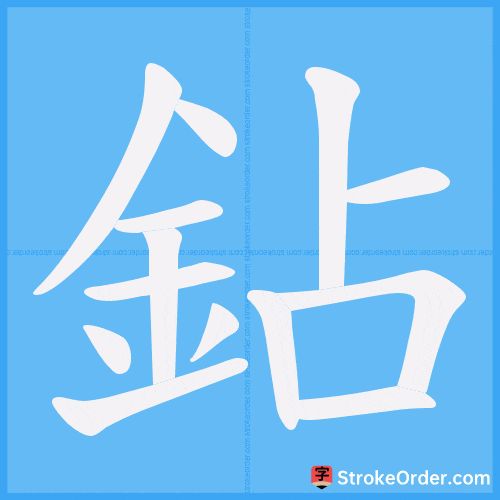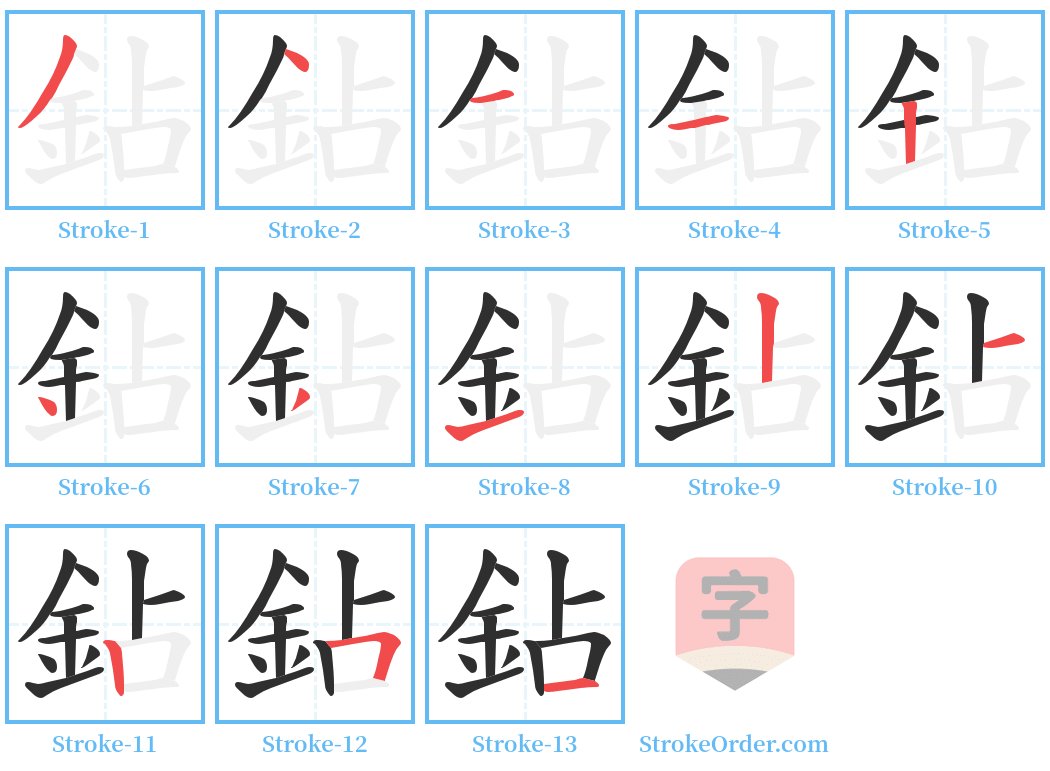鉆 Stroke Order
Animated Stroke Order of 鉆

Stroke Order Diagrams for 鉆

Information of 鉆
Pinyin
zuān
Radical
釒
Strokes
13 strokes
Usage
★★
Definition
鉆
1. Iron clamp, now known as tweezers.
2. An ancient device used to lubricate the wheel hubs, making the wheels turn smoothly.
1. Iron clamp, now known as tweezers. "In the Shuowenjiezi, under the section on metals: '鉆, it is an iron clamp.'"
2. An ancient device used to lubricate the wheel hubs, making the wheels turn smoothly. "In the Shuowenjiezi, under the section on metals: '鉆, it is used to grease the wheels.'"
Same as "钻" (drill).
1. Ancient torture device.
2. Same as "鉗" (tongs). 1. To pinch or grasp.
3. Metal pieces used to reinforce the joining ends or corners of objects.
4. Wedge, also written as "櫼".
5. To expel an object using a wedge.
1. Ancient torture device. "In the Book of the Later Han, Chronicle of Emperor Zhang: 'Since the large prison has existed, many have been captured and subjected to tortures, including the practices of drilling, which are exceedingly cruel.'"
2. Same as "鉗" (tongs). 1. To pinch or grasp. "In the Ji Jiu Pian: 'lamp, clamp, lock, drill, and forge.'"
3. Metal pieces used to reinforce the joining ends or corners of objects. "In the Zhengzi Tong, under the section on metals: '鉆 refers to the ways in which objects are joined with metal pieces for reinforcement or how metal pieces are used at corners.'"
4. Wedge, also written as "櫼". "In the Strategies of the Warring States, Zhao's Strategy One: 'I suffer from iron wedges, which go in and out as I wish.'"
5. To expel an object using a wedge. Reference from Qing dynasty author Wu Wenying's "Investigation on Wu Dialects": "The people of Wu say that when an object enters a hole and cannot exit, they strike it from behind to force it out, which they call 鉆."
1. To penetrate into an object.
1. To penetrate into an object. "In the Guangyun, under the section on folded characters: '鉆, to penetrate into an object.'"